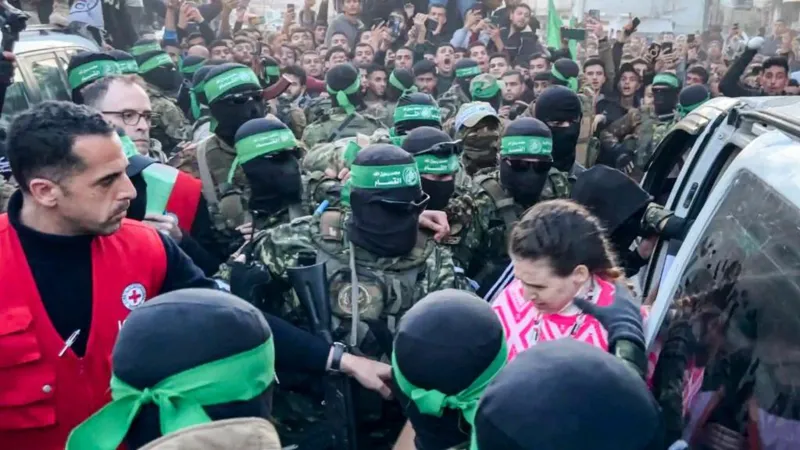A ceasefire between Israel and Hamas has been enacted after over a year of intense war. The conflict began with a surprise attack by Hamas on Israel, leading to significant destruction in Gaza. The ceasefire led to the release of three Israeli hostages and 90 Palestinians, signaling a fragile step toward peace.
Hostages Released Amid Tension
The ceasefire negotiations initially faced tension as Hamas delayed providing the names of the hostages it would release. Despite this, Israeli airstrikes continued on Gaza, resulting in the deaths of several Palestinians before the ceasefire was fully enacted.
The three Israeli women—Romi Gonen, Doron Steinbrecher, and Emily Damari—were handed over to the Red Cross in Gaza and later transferred to Israel for medical treatment and reunification with their families.
Israel and Palestine Exchange Prisoners
As part of the ceasefire, Israel freed 90 Palestinian prisoners in exchange for the hostages. The broader agreement includes the release of a total of 33 hostages and nearly 2,000 Palestinians. However, the fate of many hostages remains uncertain, with some believed to have been killed.
Humanitarian Crisis in Gaza
While the ceasefire provides some relief, the humanitarian crisis in Gaza remains severe. Over 46,900 Palestinians have lost their lives in the conflict, and large parts of Gaza have been destroyed. Many civilians, displaced by the violence, are living in extreme conditions in shelters or makeshift homes, struggling with a lack of basic necessities like food, water, and warmth.
Hope Amidst Destruction
As some displaced Gazans begin to return home, the challenges are immense. 70% of Gaza’s buildings have been damaged or destroyed, leaving many without shelter. Despite this, some civilians, like Noura Zakout, have expressed hope to return to Gaza City, even though their homes may no longer exist.
Fragile Peace and Political Fallout
The ceasefire remains in its early stages, and its future is uncertain. In Israel, the agreement has sparked political tensions, particularly with far-right ministers who have resigned in protest. National Security Minister Itamar Ben-Gvir, a prominent critic, expressed concerns that the ceasefire could undermine Israel’s main goal: the total destruction of Hamas.
The Road Ahead
Although the ceasefire offers a brief respite, the situation remains fragile. The release of hostages and the exchange of prisoners provide hope, but significant challenges lie ahead. International stakeholders, including the United States, have described the ceasefire as a “last chance” for Gaza and the wider region.
In Gaza City, medical professionals and aid workers continue to offer care amid overwhelming devastation, hoping for a long-term solution to end the cycle of violence.






